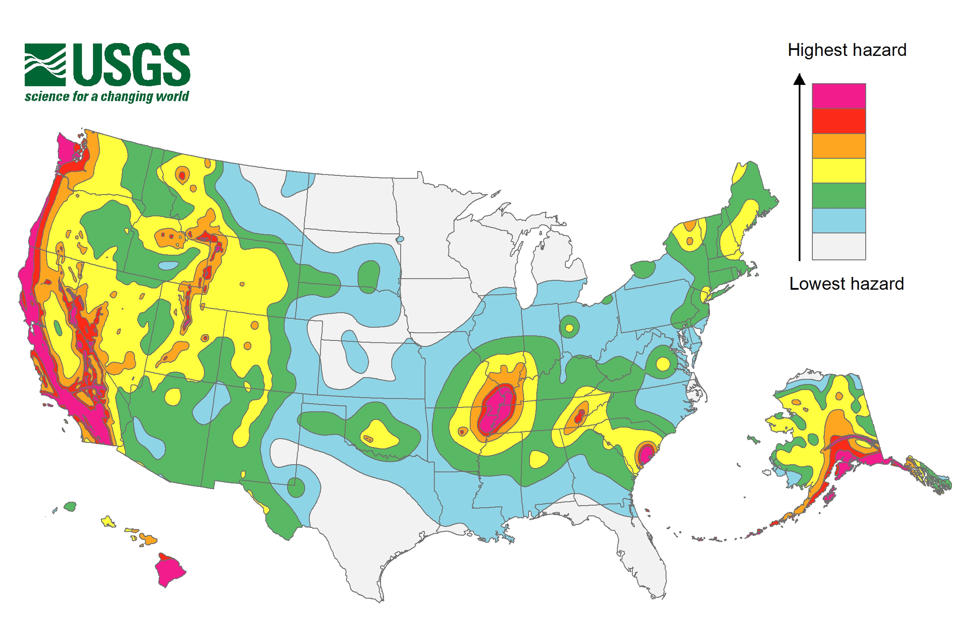
© AP/USGS
A new federal earthquake map dials up the shaking hazard just a bit for about half of the United States and lowers it for nearly a quarter of the nation.
The U.S. Geologic Survey updated Thursday its national seismic hazard maps for the first time since 2008, taking into account research from the devastating 2011 earthquake and tsunami off the Japanese coast and the surprise 2011 Virginia temblor.
Most of the changes are slight. Project chief Mark Petersen said parts of Washington, Oregon, Utah, Oklahoma, Colorado, Wyoming and Tennessee moved into the top two hazard zones.
Parts of 16 states have the highest risk for earthquakes: Alaska, Hawaii, California, Oregon, Washington, Nevada, Utah, Idaho, Montana, Wyoming, Missouri, Arkansas, Tennessee, Illinois, Kentucky and South Carolina.

© AP/USGSThis undated handout image provided by the US Geological Survey (USGS) shows where the earthquake hazard increased and decreased from 2008. Red/brown increased. Blue decreased. A new federal earthquake risk map dials up the shaking hazard just a bit for about half of the United States and lowers it for nearly a quarter of the nation. The U.S. Geologic Survey updated Thursday its national seismic hazard maps for the first time since 2008, taking into account research from the devastating 2011 earthquake and tsunami off the Japanese coast and the surprise 2011 Virginia temblor.





Reader Comments
to our Newsletter